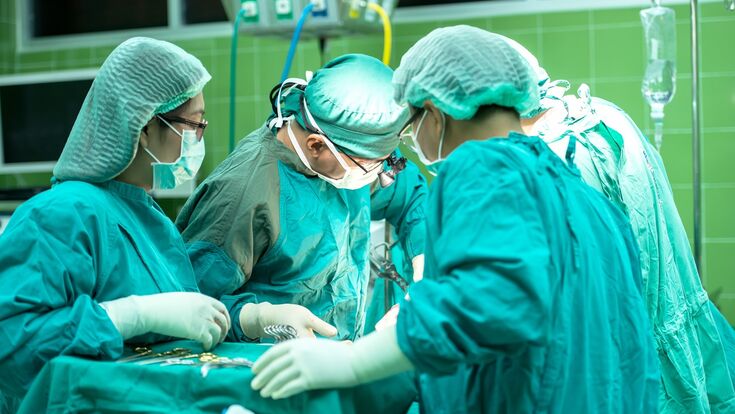Business Commentary : Exploring the resource potential of medical waste

It’s no secret that the coronavirus pandemic has created a raft of waste-related challenges for businesses across every sector – especially those in healthcare.
Hospitals and other clinical facilities have been pushed almost to breaking point as they have worked tirelessly to keep people safe from the virus. So, thinking about all-things sustainability may not have been top of their list of priorities.
However, environmental drivers aside, the medical sector must remain compliant when handling the multifaceted and often complex – if not hazardous – waste streams typical to these settings.
What’s more, the sheer volume of waste arising from over-stretched hospitals is tough to manage, but potentially contaminated materials must continue to be dealt with in a timely manner. This is critical both in terms of maintaining safe and hygienic surroundings and freeing up space for the medical profession to do its job too.
Material arising
To put this into context, the Department of Health and Social Care alone distributed over 15.7 billion items of Personal Protective Equipment (PPE) between the February 2020 to October 2021 period – meaning the figure as it stands today, is likely significantly higher.
And this is compounded by a recent report from the World Health Organisation (WHO), revealing that 30% of healthcare facilities globally were unable to cope with the amount of waste they were creating before the pandemic hit.
It also estimated that 87,000 tonnes of PPE and testing and vaccination supplies – distributed through a UN emergency initiative – have ended up as waste. Alongside approximating that the UK used three billion items of PPE per day – equating to 591 tonnes of eventually disregarded material.
So, while PPE has been vital in helping the world to battle the overwhelming health crisis, of equal importance is ensuring this waste stream is handled and processed safely, efficiently, and compliantly.
And operators within the resource industry play a crucial role in making sure the resource potential of clinical waste is harnessed, to ensure maximum benefit to both the environment and public health.
Shredding medical waste
In truth, some operators steer away from handling clinical waste – such as soiled dressings or PPE – due to its often-corrosive nature. But even seemingly high-risk waste does still have a resource value.
So, rather than sending these difficult-to-dispose-of materials to landfill, why not prioritise the recycling or energy recovery route instead?
The potential environmental and health risks associated with poorly discarded medical waste are alarming. Surgical dressings slowly rotting away in a landfill site or sharps-related injuries are scenarios that are happening right now across the world, but it doesn’t need to be this way.
While, of course, prevention of this waste is the ideal first step, where this is not possible, an effective method for recycling and material liberation should be sought.
The process of industrially shredding these high calorific value materials not only ensures their safe use via the Waste-to-Energy market – converting ‘waste’ into a valuable fuel – but stops them polluting the atmosphere too.
Ultimately, this is a far more circular and sustainable approach to the treatment of these important and widely used items.
Want to read more on the topic of PPE waste? Click here!
Shredding for liberation
Shredders also often make it possible to liberate and extract the valuable materials that would otherwise remain ‘locked’ inside a product, so that they can be used for manufacturing. In the context of healthcare waste, this is especially relevant when considering the ‘extraction’ of silicone absorption beads from sanitary items.
Despite highly controlled waste segregation methodologies within clinical settings, the fast-paced nature of the healthcare sector means objects like sharps can sometimes end up in the incorrect waste-stream, in a bin intended only for linen, for example. Shredding helps liberate and separate such materials, as well as providing the opportunity for the correct level of sanitisation to be undertaken – minimising the likelihood of injury and ensuring maximum safety.
UNTHA has engineered cutting configurations specifically for processing medical waste, with mechanical seals, bearings and gearboxes protected from the ingress of corrosive materials. Intrinsic foreign object protection systems are also crucial in safe-guarding a medical waste shredder from damage, as the contents of this industry’s waste streams can never be entirely guaranteed – titanium hip joints are a great example of this.
While some sector professionals will read this and think – quite rightly – that the need for secure handling and disposal of clinical waste is obvious, the current pollution issues facing our planet highlight there’s still some room for improvement.
For example, the WHO reported that the UK’s carbon emissions increased by 1% between February and August 2020 – by using vast amounts of PPE – and called for reforms on how this waste stream is disposed of.
This should be seen as a call to arms for the industry, as there’s never been a more important time for sector professionals to collaborate and help drive positive environmental, ethical, and social change.

